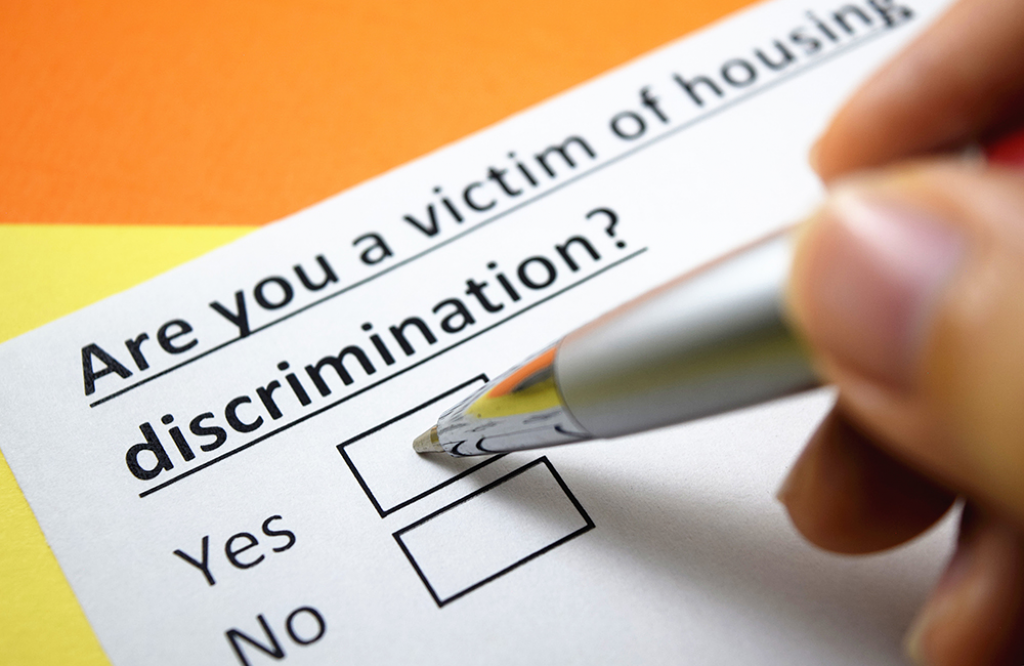Housing Discrimination Widens the Homeownership Gap for Black Americans

- The homeownership gap amongst Black Americans has increased by more than 30%.
- The history of discrimination in the housing market has made it harder for Black Americans to become homeowners and or refinance their homes.
- Despite being 2022, federal fair housing laws still are not equal regarding race or national origin.
The housing market is one of the most important components of the economy. It allows people to invest in assets and build wealth and is a major factor in overall economic growth. For most, homeownership is a part of living the American dream. But, for Black Americans, the American dream can sometimes be a facade.
According to a 2020 survey, Black Americans were denied at a rate of 84% higher than white Americans when applying for a mortgage. Studies also have shown that Black homeowners are more likely to receive offers well below their asking price than white homeowners.

Wells Fargo, the nation's second-biggest mortgage lender, approved only 47% of refinancing applications by Black homeowners in 2020. That is compared with the approval rate of white homeowners, coming in at 72% approval. Aside from approval rates, many Black Americans are also charged higher interest rates than other races.
For many Black Americans, the typical American dream is simply just that, a dream. The housing market has been fraught with discrimination and has a long history behind it.
Recommended Read: Wells Fargo Rejected Half of Their Black Applicants
Racial Steering & Racial Covenants
Racial steering is where real estate agents guide potential home buyers to or away from certain neighborhoods because of their race or national origin.
From 1948 to 1968, the Federal Housing Administration recommended the use of racial covenants to provide protection against Black Americans and “steer” them into their own neighborhood.
The covenants were "unenforceable" and served as a guide for potential homeowners, real estate agents, lenders, and insurers. Most notably, they severely limited access to becoming a homeowner for Black Americans.
It wasn't until 1968 that these covenants were deemed illegal.
Redlining: Mapping Out Black America
The government created homeownership programs that would outline areas on the map where Black Americans lived and would deem these areas a risky investment. This process was called redlining.
As the popularity of the government-insured mortgage increased, the government would consistently add parameters for appraising and vetting properties and who would qualify. In addition, the color-coded maps the federal government used ranked how much loans would be worth in certain residential neighborhoods. This happened in more than 200 cities and towns across the United States.
Recommended Read: Redlining’s Lasting Effects on Black Americans Today
Though the federal government never made any of these maps public, Historian Kenneth T. Jackson discovered a particular map of St. Louis while searching for housing records.
Jackson noticed that the areas on the map all had one thing in common. They were Black neighborhoods. The maps had ratings written next to certain regions. Ratings were from A through D, with D being the areas that would most likely have to decrease property value within the coming years.
Soon after his discovery, many private lenders began using the government's maps. As a result, this restricted many Black homeowners from being approved for mortgages.
Redlining became increasingly popular during the Civil Rights Movement and led to the Fair Housing Act of 1968. The Home Mortgage Disclosure Act of 1975 followed suit, which required the release of lender data.
Fair Housing Act of 1968
The Federal Fair Housing Act of 1968 was created to end discrimination in the housing market as it pertained to housing sale, rental, and financing based on race, religion, national origin, sex, handicap, and family status.
The act was passed after a year-long battle with Congress regularly considering the bill but failing to attain a strong majority to pass.

During the time that the act was passed, a growing number of poor African Americans and Hispanics were losing their lives on the frontline in Vietnam. The families of these brave young men could not come home after the war to buy or rent homes in certain residential developments because of the color of their skin and or national origin.
Recommended Read: Equity vs. Equality, and Why African Americans Deserve Both
Many organizations fought hard to get Congress to pass the Fair Housing Act and establish equality among all Americans. Some of those organizations included the National Association for the Advancement of Colored People (NAACP), the National Association of Real Estate Brokers (NAREB), the American GI Forum, and the National Committee Against Discrimination.
The Money Wrap-Up
Though our laws have changed, there is still some level of prejudice against Black Americans when it comes to buying or selling homes. Realistically, it will take going back and fixing the cracks in the foundation, where it all started.
Policies and reforms should be created to include Black Americans. In addition, it is going to take partnering with like-minded stakeholders in the housing division. For example, The Federal Housing Administration(FHA) and The U.S Department of Veterans Affairs need stronger government mortgage insurance programs.
For the Black community, the multitude of benefits of homeownership has never been a secret. But instead, the issue is not being given an equal and fair opportunity for home pricing and home approval when applying for a mortgage. Until the issues are fixed, the gap will only continue to widen.